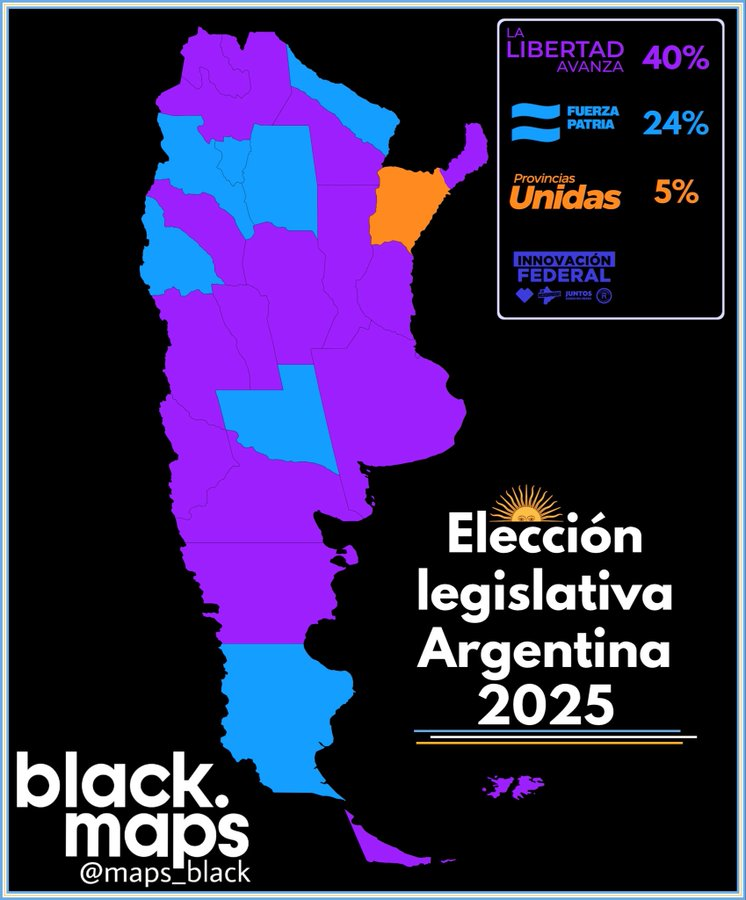Argentine Legislative Election Map 2025


Marcus Rodriguez
Historical Geography Expert
Marcus Rodriguez specializes in historical cartography and geographic data analysis. With a background in both history and geography, he brings unique...
Geographic Analysis
What This Map Shows
This map visualizes the upcoming Argentine Legislative Election scheduled for 2025, detailing the various electoral districts and the political landscape across the country. The representation is crucial for understanding how legislative power is distributed in Argentina, which is pivotal for shaping national policies and governance. As we delve deeper, it’s essential to understand the significance of these elections in the broader context of Argentine politics and society.
Deep Dive into Argentine Legislative Elections
Elections are a cornerstone of democracy, and in Argentina, they play a critical role in shaping the country's political landscape. The Argentine Congress consists of two chambers: the Chamber of Deputies and the Senate. The legislative elections primarily focus on the election of Deputies, where all 257 members serve four-year terms, with half of them up for election every two years. Interestingly, the Senate is composed of 72 members, with three senators from each province and the Autonomous City of Buenos Aires, serving six-year terms.
However, what makes the 2025 elections particularly interesting is the evolving political dynamics within the country. Over recent years, there has been a noticeable shift in voter preferences, influenced by economic challenges, social issues, and political scandals. The map not only highlights the electoral districts but also reflects the historical voting patterns and how they may influence the upcoming elections.
In recent elections, voter turnout has seen fluctuations, primarily due to public discontent regarding economic conditions. Argentina has faced inflation rates soaring over 40%, leading to widespread frustration. This economic backdrop is likely to play a significant role in shaping the electoral outcomes as voters decide how to express their dissatisfaction or support for current political parties.
Moreover, the electoral map's color coding reveals the strongholds of various political parties. Traditionally, the Peronist party has enjoyed considerable support in the northern provinces, while more conservative parties have found strong backing in urban areas like Buenos Aires. The complexity of Argentine politics is further heightened by the presence of smaller parties and coalitions that can sway election results, particularly in close districts.
Regional Analysis
Let’s break down the electoral landscape by regions. In the Buenos Aires Province, which holds the most significant number of electoral votes, the map indicates a strong presence of the Frente de Todos coalition. This coalition, rooted in Peronism, has historically dominated this region. However, the rise of the coalition known as Juntos por el Cambio has begun to challenge this dominance, especially in urban centers where economic issues resonate more with voters.
Moving to Patagonia, we see a different picture. Provinces like Neuquén and Río Negro have shifted towards more regional parties, reflecting local concerns over natural resources and autonomy. This regional variation is fascinating; it shows how local issues can overshadow national narratives in certain areas.
In contrast, the northern provinces, such as Salta and Jujuy, remain strongholds for the Peronist party, showcasing the party's deep-rooted history in these areas. The social and economic fabric of these provinces often aligns with the policies traditionally championed by Peronism, creating a predictable voting pattern.
What’s intriguing is how the map can illustrate potential battlegrounds. Regions that are usually swing areas, like Santa Fe and Córdoba, may determine the balance of power in Congress. The demographic changes, such as urban migration and youth engagement, are likely to influence voting patterns in these areas, making them critical to watch as the elections approach.
Significance and Impact
Understanding the implications of the Argentine Legislative Elections is crucial for both national and international audiences. These elections not only determine the composition of the legislative body but also influence Argentina's stance on global issues, such as trade relations, environmental policies, and social justice. The outcomes could lead to shifts in policy that address pressing economic concerns, such as inflation, unemployment, and poverty.
As we look forward to 2025, current trends suggest that economic recovery will be a central theme in campaigning. Political parties that can successfully articulate their plans for economic stabilization may attract undecided voters. Furthermore, the role of technology and social media in this election cannot be underestimated. Younger voters, who are more tech-savvy, are increasingly influential, and their engagement could shape the political discourse leading up to the elections.
In conclusion, the 2025 Argentine Legislative Election map offers more than just geographical insights; it reflects the pulse of a nation grappling with economic turmoil and seeking a path forward through democratic processes. As we approach the election, the evolving political landscape will undoubtedly yield new developments that warrant close attention from both citizens and observers alike.
Visualization Details
- Published
- October 27, 2025
- Views
- 10
Comments
Loading comments...